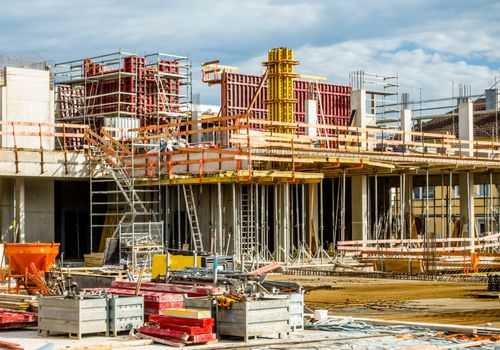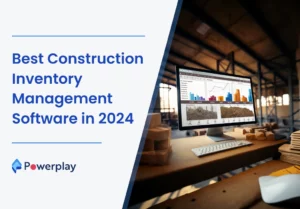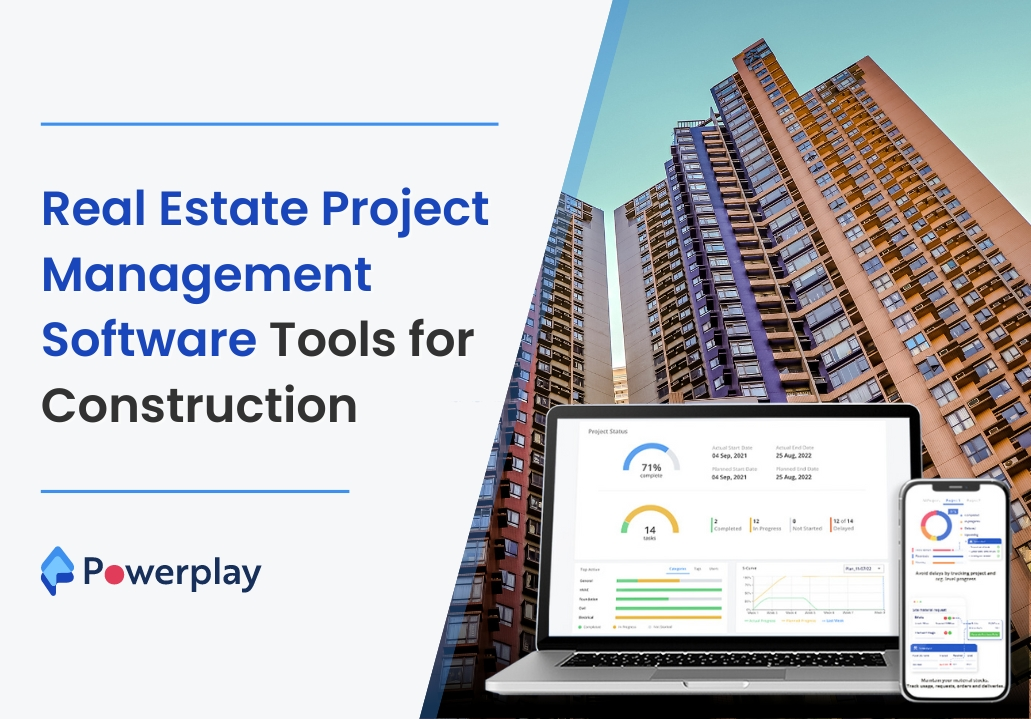Building Information Modelling (BIM)
-
Kumar Abhishek Anand
- October 12, 2023

The construction industry along with architecture and engineering as a part of it or famously known as the AEC(Architecture, Engineering and construction) industry is one of the most risk-prone industries when compared to other industries, both in terms of amount invested and hazardous work environment. The AEC industry rarely witnesses a project being completed on or before time and within the given budget to achieve a set of deliverables. Many issues are encountered either during the initial phase or during the execution phase or even in the post-construction phase, some of which are issues like improper cost or material analysis, unavailability of resources on time, lack of communication and coordination among teams, that lead to project delay and increase in budget.
Due to these kinds of issues arising across all construction projects and with the ever-growing construction industry that demands technologies to improve its efficiency and pace of execution, more advanced technologies are being developed to assist the construction industry in eliminating these issues and enhancing the entire construction process and the operations involved in it.

The construction industry is in the midst of a technological revolution and technologies like (Building Information Modelling)BIM in construction management are certainly leading the way. BIM in construction management is changing the industry, by upgrading both the methodology and technology being used in construction.
Table of Contents
ToggleWhat is Building Information Modelling?
BIM in construction management is a broad term that is used to describe the creation and management of digital information about a structural asset in the construction process and does so by incorporating people, technology and various processes involved in a project, to improve the efficiency of construction projects and to streamline time and cost. More accurately it is a building design technology that is used by designers to create intelligent and accurate 3D designs of the structures.
Not only does it refer to the designing of structures but it also refers to the building and operating of a structure collaboratively using an individual comprehensive system of 3D models instead of separate designs for each component. BIM is not just a 3D modeling software, it acts as the repository of information that constitutes a project that can be shared with different entities involved in the construction project.
Working with the BIM model allows a much more dynamic and synchronized approach in managing a construction project, unlike its predecessors that relied on several file formats and blocked processes that lost sync when some changes were made.

Unlike other programs that are only used when a structure is designed or constructed, the BIM model is there for the entirety of the structure from conception to demolition. Once the building is designed by the architect, the contractors build the structure according to the same model, and on completion, the clients again use BIM in construction management to schedule maintenance and accomplish final infrastructure objectives.
Advanced BIM model systems include data related to building information modeling and intelligent information such as construction scheduling and sequencing, information related to cost, and lifecycle management, that enables management of documents, coordination, and simulation throughout the process duration.
BIM in construction management helps you predict what exactly a project structure is going to look like and stores all the information in a centralized repository that helps the team to test different design options through simulation, to help stakeholders understand what the structure will look like through visualizations, and to develop validated design.
It not only shows what a project will look like but also what it will act like. One of the best features of BIM is that it allows architects, engineers and contractors to use and make changes to the project description simultaneously, and the changes made by any individual party are instantly reflected in all other parties which allow for immediate communication and coordination.
Why Building Information Modelling?
Building Information Modeling or BIM model is used to improve productivity and efficiency of the construction process by reducing waste, saving time and excess cost on tasks, and improving the quality and effectiveness of structures.
An organization cannot make rapid progress in the construction industry unless they know what not to do in project processes. This level of understanding and expertise can only be gained by the organizations when they have invested an ample amount of time and money in researching and innovating techniques that make the construction processes more streamlined.

The research efforts put in by the R&D team can only prove to be of any use when it develops methods and processes in an environment typified by time and financial limitations, deadlines, fiscal borrowings, huge research teams, etc, and thus it is impractical to test out new theories and hypothesis in the real world, rather these ideas can be simulated in iteration through the use of software to innovate a smart and intelligent construction process. This is where Building Information Modelling software comes into play, as it can collect and store information digitally so that it can be used whenever needed, wherever needed, and by whomever. Choosing to use BIM software allows a continuous flow of information that helps in saving the information from the previous phase when moving from one phase to another. Every phase of the construction process from planning and design to maintenance or demolition is captured and stored digitally, which in turn improves productivity, accuracy, communication and coordination among the different parties involved in a construction project.

Building Information Modelling or BIM software proves to be an essential asset because it dynamically connects design, review and documentation in its construction workflow that results in shifting most of the efforts put into designing the project, back into the detailed design phase when the ability to influence the performance of the project is quite high and the cost of making any changes in design is low. This feature of the BIM software allows engineers to put more time into evaluating different scenarios of ‘what ifs’ to optimize and make the best possible design.
What are BIM Dimensions?
Building Information Modeling or BIM dimensions have evolved from two-dimensional to three-dimension modeling as per the demand of the time and construction industry to differentiate between modeling in the two cases. Adding more dimensions or aspects to modeling techniques helps project management teams to understand the data that they have to model.

4D and 5D modeling are also being used in designing construction projects, that are popularly known as “modeling scheduling(timeline) information to model construction consequences” and “adding financial cost” respectively. The dimension here is not actually dimensions but an addon information field that describes the model from a different perspective.
What is a BIM software Object?
Building Information Modeling or BIM software components are intelligent objects or components that constitute a BIM model and can store data and have a geometric shape. If any changes are done to these objects, the model gets updated to reflect the respective changes. The objects are used to define the product by feeding detailed information to these objects. The visualization data makes the object look like its practical appearance and behavioural information, which enable the object to be positioned or to behave in exactly the same way as the product.
This BIM software feature enables the model to remain consistent and coordinated throughout the construction process so that all engineers, contractors, designers, managers, can work in a more collaborative setting. These objects are mainly of two types, component objects which have fixed geometrical shapes and layered objects which do not have fixed geometrical shapes.
Benefits of BIM Software
There are numerous benefits of using BIM in construction management and some of them are:
- Improves Bidding Process- Clients can evaluate and compare the bids submitted by the contractors in a fair manner as Building Information Modeling or BIM software allows designers to create exhaustive 3D models of the structural components involved in a construction project, that defines all minute aspects of the project in detail. Thus the total bid amount from suppliers will be actual amounts and not estimated costs.
- Improved Design Information Management- As already explained in the above section that BIM software gives you a visual representation of the upcoming project before its actual implementation using 3D models and spatial diagrams. This allows the stakeholders to understand how the structure will look and the way it will act in the pre-construction stage itself, which in turn eliminates delays and other changes or setbacks which the project execution may face.

The database first modeling technique in Building Information Modelling software allows designers and architects to obtain and make changes to information related to the construction process using customary templates and that too, all in a single dataset. Therefore the editing process is simplified and inconsistencies are avoided that may occur when every individual tries to access his distinct files. All in all these features of transparency and coordination between parties results in a more comprehensive planning process and better design alternatives.
- Significantly Reduces Carbon Emissions- Sustainability and sustainable construction have become an essential norm in the construction industry due to their severe impact on the environment. Building Information Modeling or BIM software helps in taking-off material quantities much more accurately that results in less waste generation and eliminates redundant materials. No excess materials mean no extra consumption of energy, reduction in toxic emissions, less time in transporting supplies, which ultimately results in reduced carbon emissions.
- Improved Communication and Collaboration- Building Information Modeling or BIM software assists in coordinating all aspects of a construction project such as schedules, timings, materials, specific teams for certain operations, etc through the Building Information Modelling integration with different platforms in real-time. This helps in keeping the stakeholders updated about the project’s progress. Without proper communication, a construction project cannot be handled efficiently and the success of the project may seem to be a distant dream. The probability of any loss in the information related to the project is eliminated when all parties work in a coordinated manner, accessing data from a centralized and up-to-date BIM model.
- Better Cost Control- Since BIM software is computational software, it allows quick creation of prototypes or solutions, this process is iterated until a suitable model is created that fulfills the client’s requirements and fits perfectly as per the design plan. The prototypes can be built and tested much more quickly than manual methods that require both huge investments of cost and time. BIM in construction management simulates real-life situations as models on its platform that eliminates the cost consumption made for these research and testing processes over and over again.
- Assists in Predicting Maintenance- BIM software helps clients to predict maintenance schedules somewhat accurately that can reduce unplanned downtime or outages. This helps in estimating the budget for facility management much more precisely. The BIM software is more than capable of predicting the data points that avoids the facility management team to get caught in unexpected equipment changes. The analysis of data using BIM software helps owners to predict major and minor maintenance cycles.
- Improved Scheduling- Using BIM in construction management for organizations can streamline the design and documentation process, and update them in real-time based on any addition to the data set or any changes to it. The schedules can be planned and scheduled in a much better way using BIM software.
- Increased IoT(Internet of Things) Capabilities- Building Information Modeling or BIM software can bring IoT capabilities to construction sites and in construction organizations that can manage the huge amount of data that is generated on construction sites. The construction industry is still lagging in using technologies similar to IoT to manage the vast information pool related to a construction site. Bringing IoT capabilities to a construction site can allow more efficient equipment monitoring and maintenance, inventory management, energy usage, safety standards, quality assurance, etc.
- Better Analytics Documentation- Building Information Modeling or BIM software not only helps in improving construction processes but also increases digitization and data capture abilities during the project duration that ultimately allows organizations to capture more data that can provide better insights for improvement in future projects. The gathered data can improve efficiency, timelines and risk management, cost and construction planning.
BIM software is being used by construction firms so that it can seamlessly manage construction projects and make the construction industry more efficient. Construction project management can be easily achieved and executed using project management tools that have been specifically devised to make the construction process more smooth and efficient.
Powerplay application proves to be an allrounder in construction project management that can be easily handled by all employees, clients, and contractors specific to a construction project. There are many applications out there for this purpose globally, but Powerplay is India’s first construction project management application that can be used to manage almost all types of construction projects going on in the country.
Share
Kumar is a digital content professional with more than 2 years of experience in Blog writing, copywriting and scripting. His passion lies in the art of creating convincing content that plays a major role in converting leads for SAAS businesses.












